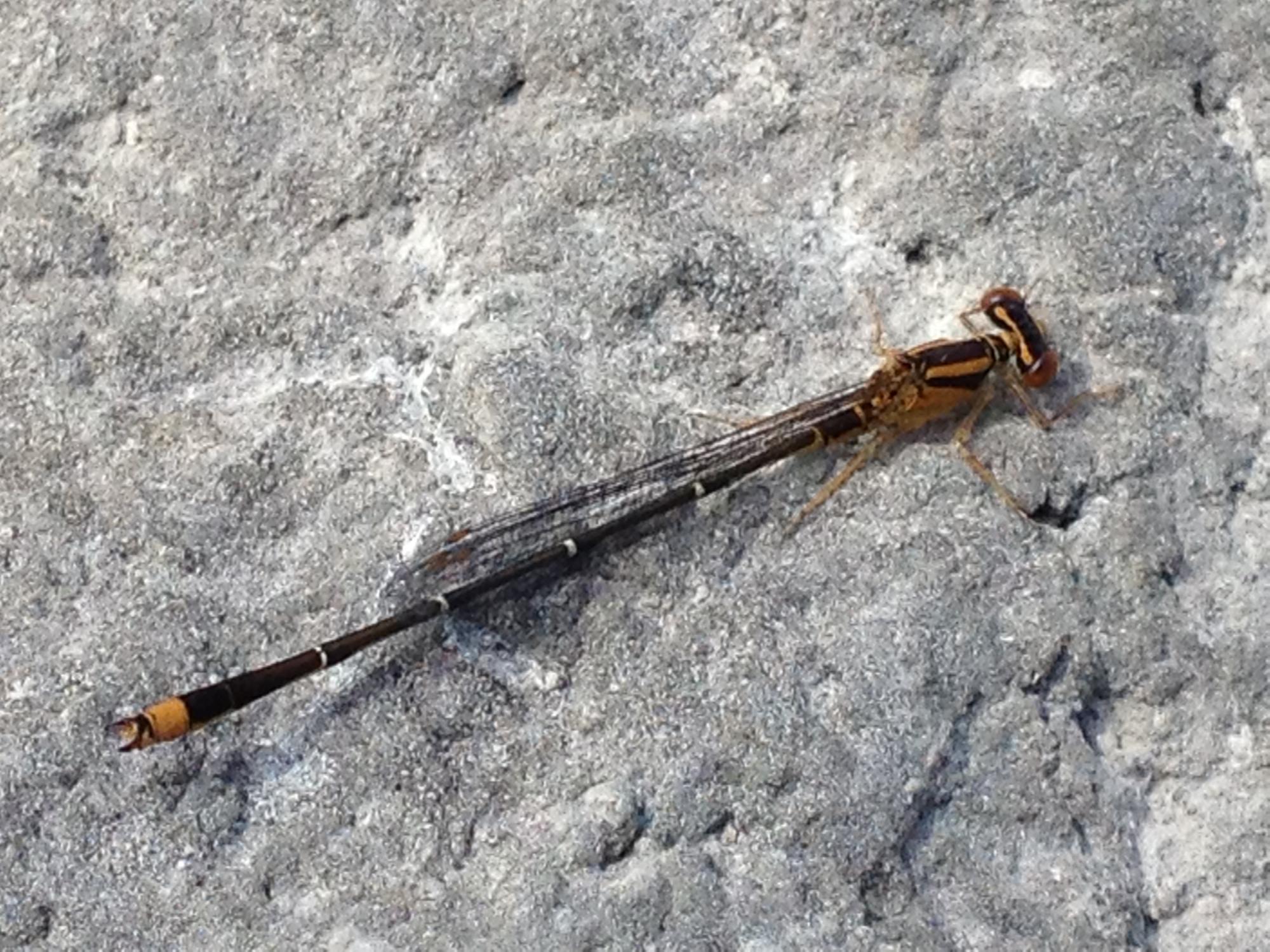EASTERN RED DAMSEL, VIOLET DANCER, AND ORANGE BLUET
Violet Dancer. This is one of my favorite damselflies because it comes in my favorite color: purple!
Orange Bluet. This is another colorful and widespread damselfly.

Eastern Red Damsels are found in good quality wetland habitats. There are healthy populations at Cedar Bog, Siebenthaler Fen, Fairborn Marsh, and some of the other Beaver Creek Wetlands parks.
Violet Dancers are fairly common and widespread. I find them at a number of locations and habitats from late May through September.
This is a mated pair of Orange Bluets. The female (below) is yellowish in color.
This is a young female Orange Bluet, so she is blue instead of orange or yellow. (Confused yet?)
Orange Bluets have orange abdomen tips, a feature which distinguishes them from the orange form of the Eastern Forktail (the latter has a black abdomen tip).
Violet Dancers are a subspecies of the Variable Dancer. Their bright purple color is unique among damselflies in our area.
A young Eastern Red Damsel, photographed at Fairborn Marsh on May 15, 2022.
This is a male Orange Bluet. He is recently emerged, so he has not yet developed the orange color of mature males. (I told you Orange Bluets were confusing!)
Orange Bluets have a long flight period, from May through late October (weather permitting).
Another newly-emerged male Orange Bluet, photographed on May 5, 2024 at Fairborn Marsh.
Another young Eastern Red Damsel. The bright red color is unique among damselflies in our area. Or at least, it was until 2021! Watch out for the similar red-colored Duckweed Firetail, recently documented at Cincinnati in 2021. Duckweed Firetails are not known to occur in Dayton, but they might be expanding their range northward.
Eastern Red Damsels have an early flight season, from May through July.